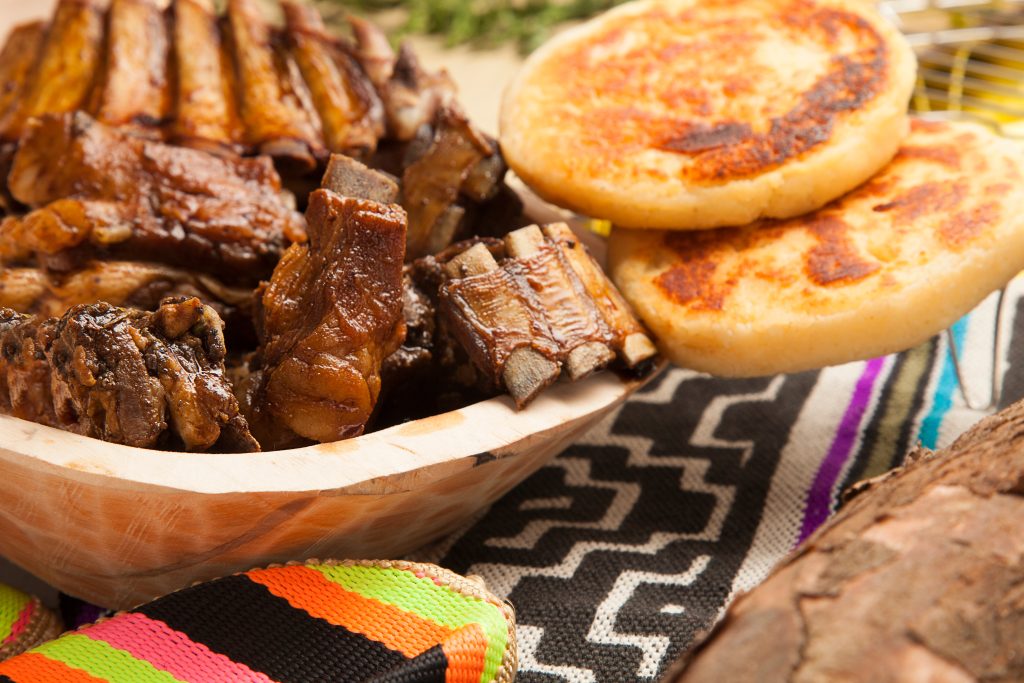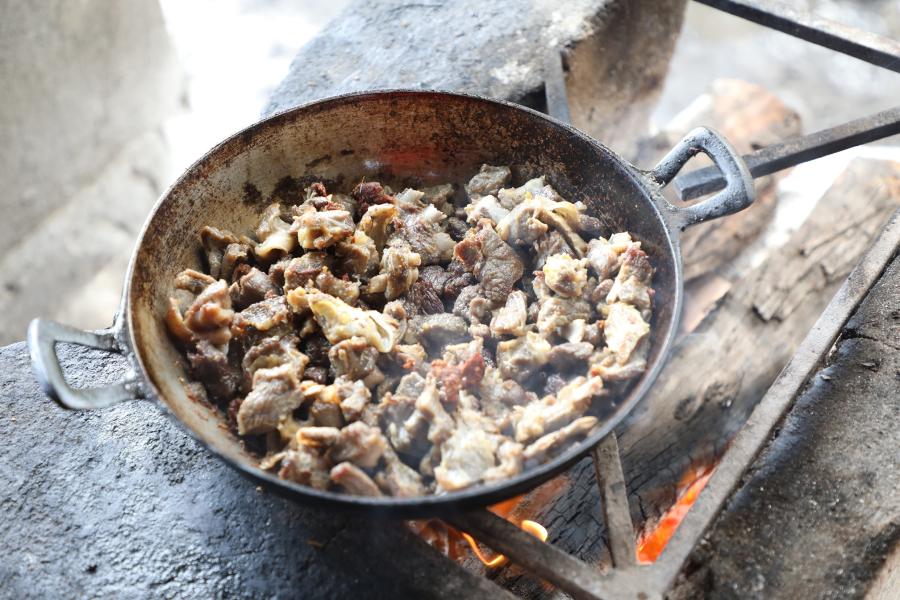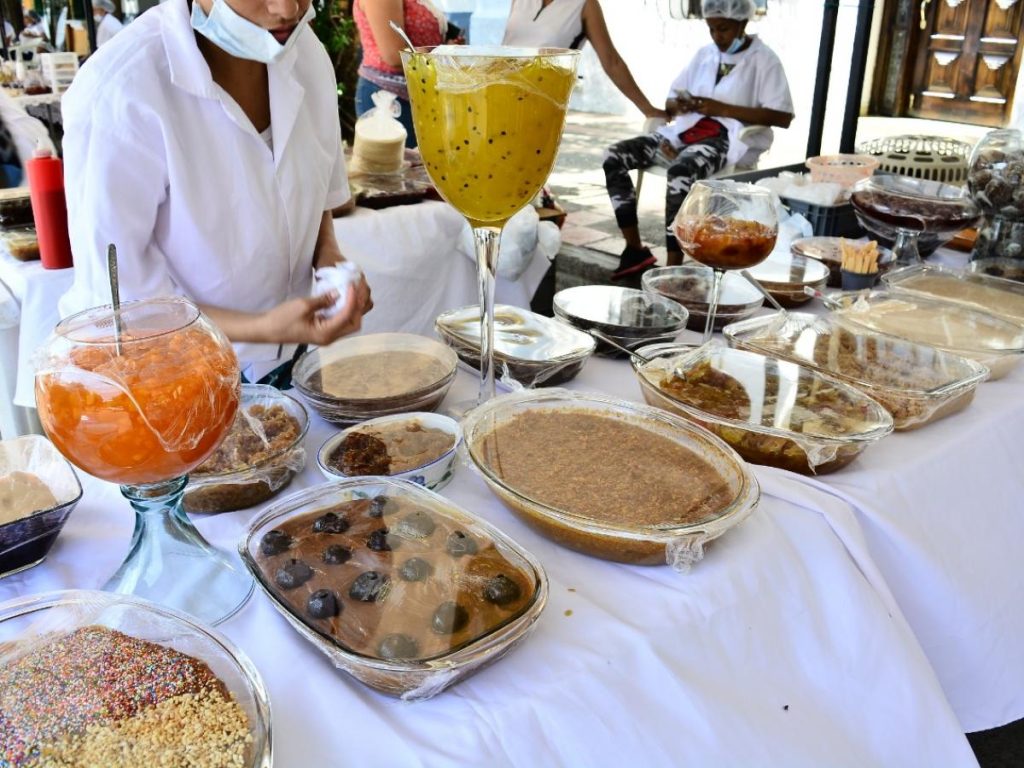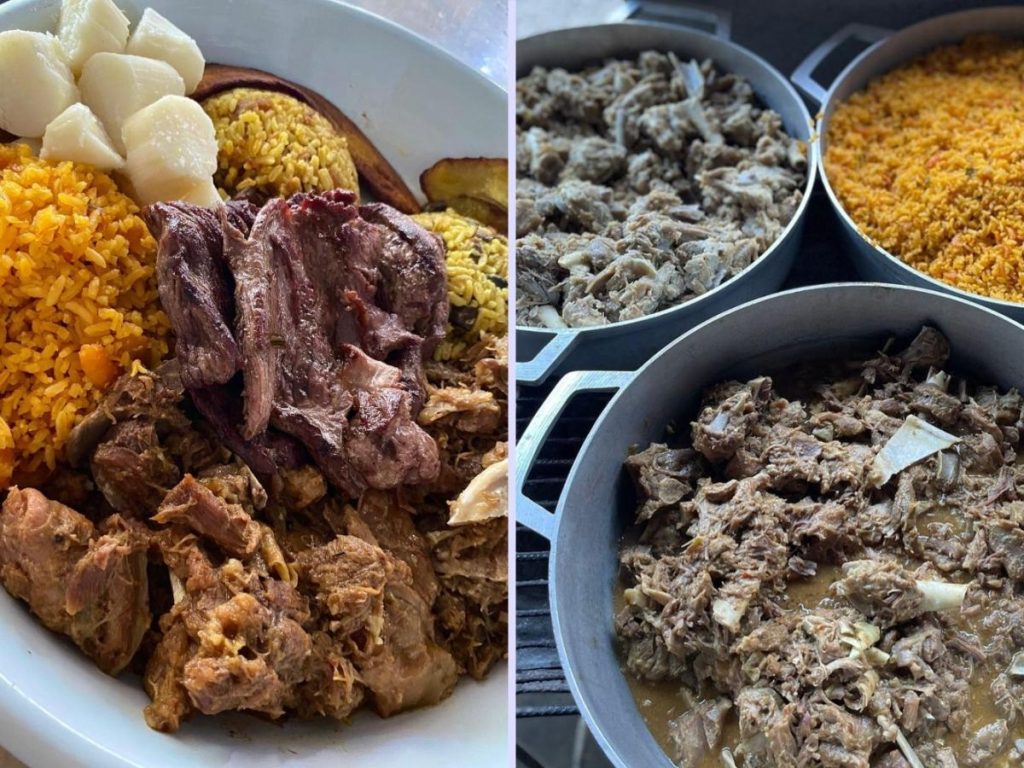
In the heart of the La Guajira desert, the Wayuu gastronomy has woven a rich culinary tradition that fuses ancestral ingredients and primitive cooking techniques with colonial influences. From the intensely smoked goat friche to the iguana stew in coconut milk, each dish tells a story of adaptation and resistance. In a region where water is scarce and the land arid, food is not just sustenance but the core of family and community life. Despite modern challenges, the Wayuu continue to preserve their recipes and techniques, keeping their cultural identity alive in every bite.
Before the arrival of colonizers, the Wayuu diet was deeply connected to their natural environment. Local crops like yuca, squash, melon, legumes, and beans formed the base of their diet, combined with animal protein sources such as rabbit, deer, peccary, turtle, and shark. These ingredients were cooked using primitive techniques, including the use of animal fats, which added a distinctive flavor.
The arrival of the Spanish brought significant changes. Rice, introduced by the colonizers, soon became a staple, alongside other new ingredients like tomatoes, garlic, and olive oil.
The fusion of indigenous and colonial culinary practices gave rise to unique dishes that combined the best of both cultures. Rice was mixed with native products like yuca and beans, creating rich and varied combinations. This adaptation diversified the Wayuu diet and integrated new flavors and culinary techniques. Clear examples of this cultural blend include rice with shrimp and friche, which have evolved to incorporate new cooking techniques and presentation styles.
Friche is one of the most representative dishes of Wayuu gastronomy. Made primarily with goat meat, it stands out for its intense flavor and traditional preparation. Goat, or chivo, is common in La Guajira, and its meat has been used for generations in Wayuu cuisine.
To prepare friche, fresh goat meat is cut into pieces and seasoned with salt. A crucial part of the recipe is the inclusion of the animal’s blood, which is cooked with the meat to intensify its flavor. The mixture is sautéed in oil over a wood fire, giving it a distinctive smoky flavor. Friche is commonly served with yam or rice with shrimp.

Iguana stew in coconut milk is another iconic Wayuu gastronomy, known for its unique combination of ingredients and careful preparation. Iguana meat, known for its mild flavor and tender texture, is mixed with oil and coconut milk.
To prepare this stew, iguana meat is cut into pieces and cooked over low heat in a mixture of oil and coconut milk. Local seasonings, like garlic and achiote, are added to enhance the flavors.
Due to the high consumption of iguana, specialized farms have been established for breeding this reptile, preserving the wild population and ensuring a sustainable supply of iguana meat.
Rice with shrimp is a popular dish in the Wayuu gastronomy in the coastal region of La Guajira. This recipe combines rice, introduced by the Spanish, with local shrimp, creating a delicious and flavorful mixture. The shrimp are blanched and dehydrated, concentrating their flavor and making them easier to preserve.
The rice is cooked with the shrimp and seasoned with achiote, a local condiment that gives it its characteristic yellow color. This dish exemplifies the fusion of indigenous and colonial influences.
Grilled fish showcases the simplicity and freshness of Wayuu gastronomy. Red snapper, cachirra, and sea bass are common choices, prepared on charcoal grills.
To prepare grilled fish, the fish is cleaned and seasoned with salt and local spices, then placed on a charcoal grill. The embers allow for even cooking and give the fish a characteristic smoky flavor. This dish is often served with rice, salad, or potatoes.
Sweet papaya is a traditional dessert that reflects La Guajira’s tropical climate and the influence of various culinary traditions. It is made by cooking papaya in water with sugar, cinnamon, and baking soda, resulting in a soft texture and a sweet, spicy flavor.
To prepare sweet papaya, papayas are peeled and cut into pieces, then simmered in a mixture of water, sugar, and cinnamon. Baking soda helps maintain the fruit’s texture. This dessert is often served with costeño cheese, creating a unique combination of sweet and savory flavors.

Wayuu gastronomy is distinguished by its use of local ingredients that reflect the richness of its natural environment:
These local ingredients are valued not only for their flavor but also for their ability to adapt to the harsh conditions of the La Guajira desert.
The preparation of food in Wayuu gastronomy is characterized by the use of ancestral cooking techniques passed down through generations. These techniques not only preserve and enhance the flavors of the ingredients but also reflect a deep connection with nature and cultural traditions.
One of the most emblematic techniques is wood fire cooking, used for dishes like friche and grilled fish. Wood from local trees adds a distinctive touch to the dishes.
Cooking over a wood fire is also a way to connect with the natural environment and keep culinary traditions alive. This method allows for slow, even cooking, ideal for bringing out the natural flavors of ingredients.
Another ancestral technique is dehydration, used to preserve seafood, particularly shrimp. This process involves blanching the seafood and then drying it in the sun, concentrating its flavor and allowing for long-term preservation. Dehydration is essential in a region where fresh food availability can be limited.
Wayuu gastronomy is not just about food; it’s also the core of family and community life. The kitchen is where families gather, share stories, and celebrate traditions. Food is seen not only as physical sustenance but also as a symbol of unity and cultural continuity.
Food plays a central role in Wayuu celebrations and rituals. During events like weddings, funerals, and religious festivities, traditional dishes are carefully prepared and shared. These moments strengthen social bonds and allow for the transmission of culinary knowledge from one generation to another.
The Guajira Peninsula is an arid desert, presenting unique challenges for agriculture and livestock. The Wayuu have developed ingenious techniques for cultivating crops and raising animals in this harsh environment, including traditional irrigation methods and sustainable farming practices.

Food plays a crucial role in various Wayuu celebrations, with specific dishes and rituals associated with each event. Weddings, funerals, and religious festivities all feature traditional foods that symbolize different aspects of their culture and beliefs.
Food is an expression of Wayuu cultural identity. The ingredients and traditional cooking techniques are a manifestation of their heritage and connection to the land. Each dish tells a story, whether of survival in a challenging environment, adaptation to historical changes, or celebration of community life.
Preserving traditional recipes and preparation methods is essential for maintaining Wayuu culture. Transmitting culinary knowledge to younger generations ensures that their cultural identity remains strong and vibrant.
The Wayuu community faces significant challenges due to the scarcity of natural resources, especially water and food. The Guajira Peninsula is an arid region with limited rainfall and water sources. This situation affects their ability to cultivate traditional foods and raise livestock.
The Wayuu have developed creative strategies to adapt, including efficient irrigation methods and seeking support from non-governmental organizations and government programs.
Despite modern challenges, the Wayuu strive to preserve their culinary traditions, which are a pillar of their cultural identity. The transmission of knowledge from generation to generation is a common practice.
Efforts to document and disseminate Wayuu gastronomy are increasing, with research projects, publications, and the inclusion of Wayuu dishes in restaurant menus. Gastronomic festivals and events also promote their cuisine and generate income.
In conclusion, Wayuu gastronomy is much more than a collection of recipes; it is a vital element of their collective identity, a link to the past, and a source of pride and cultural resistance. By adapting to modern challenges while preserving their culinary traditions, the Wayuu demonstrate their remarkable resilience and ensure the continuity of their unique cultural heritage.
Discover our online store featuring a stunning collection of Wayuu bags. Shop now and embrace the beauty of tradition!